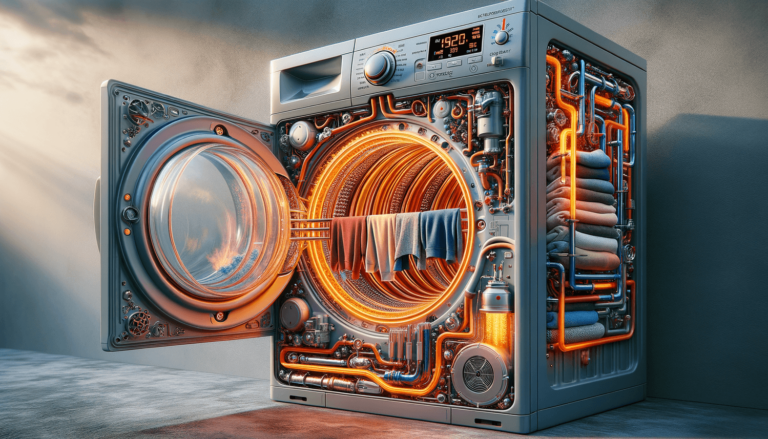

A heat pump dryer works by using a heat exchanger to absorb heat from the ambient air, then compressing and transferring the heat to the dryer drum. This process efficiently dries clothes while using less energy compared to traditional vented dryers.
Heat pump dryers require less energy to operate, making them more environmentally friendly and cost-effective for users. They can save up to 50% on energy consumption compared to conventional dryers.
For optimal dryer performance and energy efficiency, adjust the dryer settings in your heat pump dryer according to fabric types and load size. Use the following dryer settings recommended by Settings King:
Heat pump dryers utilize ventless technology, eliminating the need for external vents. They remove moisture from clothes and expel it as water through a drainage system, significantly reducing the potential for lint fires and improving indoor air quality.
Investing in a heat pump dryer can greatly alter your laundry routine in a positive way. Not only do these efficient machines save energy, but they also offer a range of advanced features that enhance drying results. Many models even offer smart functionalities that improve flexibility and ease of use.
Heat pump dryer manufacturers strive to deliver top-notch user experience and functionality. At Settings King, we’ve identified a few standout features that can make a real difference in your laundry routine:
Before investing in a heat pump dryer, do some research to ensure your laundry space can accommodate its installation requirements. Verify the space dimensions, water drainage system, and electrical supply meet the requirements specified by the manufacturer. Heat pump dryers are generally easy to maintain, but cleaning the heat exchanger and lint filter regularly is essential for optimal performance and safety.
To maximize your heat pump dryer’s efficiency, clean the lint filter after every cycle, and remove any dust accumulated in the heat exchanger at least once a month. Proper maintenance will ensure the longevity of your dryer and optimal energy savings.
Are you considering a heat pump dryer for your home? We’ve gathered the answers to some common questions that often come up for our readers at Settings King.
Yes, heat pump dryers can be used in cold environments, but temperatures below 50°F (10°C) may affect the drying efficiency. For optimal performance, install your dryer in a room with temperatures between 50°F (10°C) and 95°F (35°C).
Heat pump dryers are generally safe to use as long as proper installation, usage, and maintenance guidelines are followed. Regularly clean the heat exchanger and lint filter to prevent overheating or lint build-up and always abide by manufacturer recommendations.
Heat pump dryers typically take longer to dry clothes compared to vented dryers, due to lower temperatures and energy-efficient settings. Drying times may range between 1.5 to 3 hours, depending on load size, fabric type, and chosen dryer settings.
Yes, heat pump dryers are designed to handle various fabric types, including cotton, synthetic materials, and delicate items. Experiment with various dryer settings to find the best combination for your specific laundry needs and follow care label instructions to ensure the longevity of your clothes.
Heat pump dryers are more expensive upfront than vented or condenser dryers but provide long-term energy savings that offset the initial cost. By consuming up to 50% less energy than traditional dryers, you can save on your utility bill while reducing your carbon footprint.